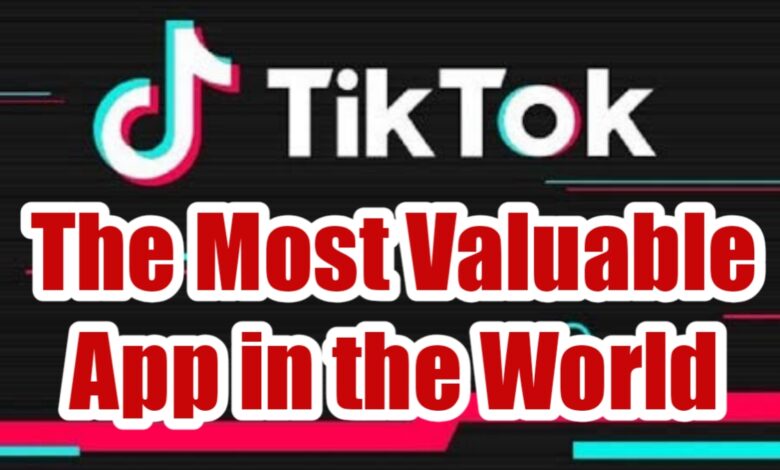The Most Valuable App in the World: A Deep Dive into Modern App Dominance

In today’s digital age, apps play a central role in shaping our daily lives, driving industries, and even influencing global markets. From social media and e-commerce to fintech and entertainment, these small icons on our smartphones represent massive corporations, each vying for supremacy in the digital ecosystem. But when it comes to the title of the “most valuable app in the world,” we must look beyond just functionality and user base. Instead, we delve into market valuation, global impact, and future potential.
In this article, we explore the most valuable app in the world today, focusing on factors like market valuation, usage statistics, and the app’s broader impact on society and the global economy. While several apps boast staggering numbers, TikTok has recently emerged as the frontrunner. With its meteoric rise, influence over popular culture, and impressive valuation, TikTok is arguably the most valuable app in the world. Let’s dissect why.
1. The Rise of TikTok: From Obscurity to Dominance
Launched in 2016 by the Chinese tech company ByteDance, TikTok quickly rose to prominence, outpacing its competitors in the crowded social media space. Originally known as Douyin in China, the app was merged with Musical.ly in 2018 to form the TikTok we know today. It has since become a global sensation, with over 1 billion active users as of 2024, and its growth trajectory shows no signs of slowing down.
A New Content Model
What sets TikTok apart is its unique content model, which emphasizes short-form, user-generated videos that are both entertaining and addictive. Unlike other social media platforms that focus on longer posts, discussions, or polished images, TikTok thrives on spontaneity, creativity, and quick consumption. Its sophisticated algorithm, which curates content based on individual user preferences, ensures that users remain engaged for hours—this has led to its exponential growth and user retention rates.
The Numbers Behind TikTok’s Success
TikTok’s market valuation is nothing short of impressive. As of early 2024, ByteDance, TikTok’s parent company, is valued at over $250 billion, making it one of the most valuable startups globally. This places TikTok in direct competition with tech giants like Facebook (now Meta), Instagram, and YouTube, which have been forced to adapt their platforms to counter TikTok’s rising dominance.
TikTok’s revenue model is diversified, leveraging advertising, influencer partnerships, and e-commerce. In 2022 alone, TikTok generated over $11 billion in ad revenue, surpassing even SnapChat and Twitter combined. Furthermore, TikTok’s appeal among Generation Z and Millennials ensures a steady stream of future users, solidifying its place at the forefront of digital culture.
2. Global Impact and Cultural Influence
Beyond its financial success, TikTok’s influence on global culture is undeniable. It has transformed how people create and consume content, shifting trends in music, fashion, politics, and beyond.
A Cultural Phenomenon
TikTok’s algorithm plays a massive role in shaping the content users see, and as a result, the app has become a significant driver of viral trends. From viral dances like the Renegade to popular challenges like #IceBucketChallenge, TikTok fosters global conversations around a variety of subjects. The platform has even played a critical role in promoting new artists—musicians like Lil Nas X and Doja Cat owe much of their meteoric rise to TikTok virality.
Shaping the Music Industry
TikTok’s ability to promote songs is unparalleled. Songs featured in viral TikTok videos often dominate music charts on platforms like Spotify and Apple Music. This trend has made TikTok an essential marketing tool for artists and record labels, fundamentally changing how the music industry operates. Songs like “Old Town Road” by Lil Nas X went viral on TikTok before climbing the Billboard charts, setting new records in streaming history. The platform has democratized music discovery, giving smaller, independent artists a chance to break into the mainstream.
Political Influence and Social Movements
TikTok’s influence is not limited to entertainment. It has also emerged as a platform for political engagement and activism, especially among younger demographics. Social movements such as #BlackLivesMatter, #MeToo, and #ClimateStrike have found a robust presence on TikTok, with users employing the platform to raise awareness, mobilize support, and demand change. In 2020, TikTok became a tool for digital protests, with users organizing mass participation in political events and fundraisers.
While TikTok’s reach has allowed for the rapid dissemination of information, it has also faced criticism for the spread of misinformation and propaganda. This duality highlights the app’s vast power, where a single trend or video can influence millions of minds.
3. Monetization and E-Commerce: The Future of TikTok’s Growth
One of the main reasons behind TikTok’s rapid ascent in terms of valuation is its monetization strategy, which goes beyond traditional ads and ventures into e-commerce. In the digital landscape, where attention is currency, TikTok has managed to monetize engagement in innovative ways.
TikTok Ads and Brand Collaborations
TikTok’s advertising strategy is one of its key revenue drivers. Brands across various industries—fashion, beauty, technology, and more—have flocked to the platform to capture the attention of its massive, highly-engaged audience. Unlike static ads seen on Facebook or Instagram, TikTok ads are often interactive, involving branded hashtags, challenges, or sponsored videos that seamlessly integrate into the user experience. This native advertising format enhances engagement and creates a more immersive brand experience.
E-Commerce Integration: Shop While You Scroll
TikTok has also begun exploring the world of social commerce, a market poised to explode in the coming years. By integrating shopping features directly into the platform, users can now purchase products they see in videos without ever leaving the app. This fusion of entertainment and shopping aligns perfectly with the habits of today’s consumers, particularly younger audiences who expect instant access to what they see.
For example, the integration of Shopify in 2021 allowed merchants to set up virtual storefronts on TikTok, creating a seamless experience where viral products could be purchased instantly. This strategic move opens up a vast revenue stream and ensures that TikTok remains a key player in the future of online retail.
The Creator Economy and TikTok’s Role
TikTok has empowered a new generation of creators, allowing them to monetize their content through brand partnerships, sponsorships, and direct payments from followers. This creator economy has not only expanded TikTok’s revenue but has also created a self-sustaining ecosystem of influencers, further boosting the app’s valuation.
The introduction of the TikTok Creator Fund—which allocates financial rewards to popular content creators—has positioned TikTok as one of the few platforms where creators can directly earn revenue from their content. This system incentivizes high-quality content creation and ensures that TikTok remains an attractive platform for influencers and users alike.
4. Challenges and Controversies
Despite its phenomenal success, TikTok has not been without its share of challenges and controversies.
Data Privacy and Security Concerns
TikTok’s Chinese ownership has raised concerns in various countries regarding user data privacy and security. The app has faced scrutiny from government authorities in the United States, India, and the European Union. In fact, India—once one of TikTok’s largest markets—banned the app in 2020, citing national security concerns related to data storage and potential connections to the Chinese government.
The U.S. has also flirted with the idea of banning TikTok, with both the Trump and Biden administrations scrutinizing its operations. In response, TikTok has worked to assure governments that user data is stored in the countries where it is collected and that it operates independently of the Chinese government.
Misinformation and Content Moderation
Like all social media platforms, TikTok has struggled with the spread of misinformation, harmful content, and cyberbullying. While the company has implemented various content moderation policies and AI-driven solutions, the sheer volume of content uploaded every second makes this a monumental challenge. Despite these hurdles, TikTok’s global influence remains strong, with its user base continuing to grow.
5. Conclusion: TikTok’s Enduring Legacy
TikTok’s journey from a fledgling app to a global cultural powerhouse is a testament to its unique blend of entertainment, social connectivity, and innovative monetization. With over a billion users, a rapidly growing ad and e-commerce revenue stream, and a significant impact on global culture, TikTok has solidified itself as the most valuable app in the world.
Its rise signals a shift in how we consume content, interact with brands, and express ourselves in the digital age. But as TikTok continues to expand, it will also need to navigate complex challenges related to privacy, regulation, and misinformation. Regardless, TikTok’s legacy as a game-changer in the app ecosystem is already assured, and its dominance in the digital landscape is unlikely to wane anytime soon.
In a world where innovation defines market success, TikTok has proven that the future belongs to those who can capture the hearts and minds of users across borders and demographics. The most valuable app in the world today may not just be a fleeting trend—it could very well be the blueprint for the future of digital interaction.




